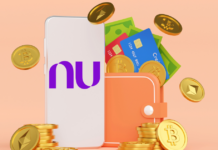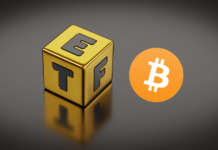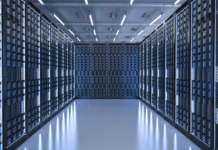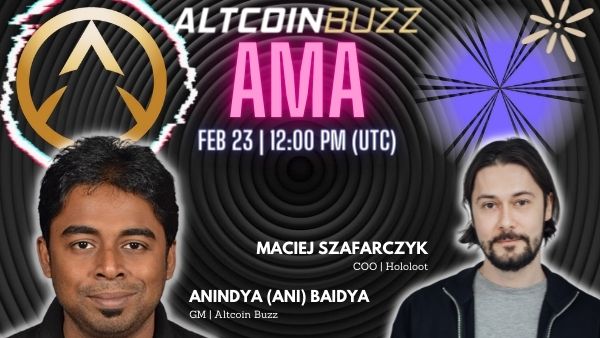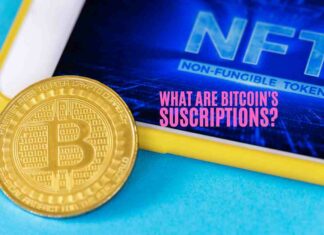Hololoot is an augmented reality (AR) NFT generator, marketplace, and Metaverse created for widespread adoption.
The General Manager of Altcoin Buzz, Anindya (Ani) Baidya, anchored the Hololoot AMA session on our Telegram channel with Maciej Szafarczyk, the Chief Operations Officer (COO) of Hololoot.
Below is a recap of the AMA session with Maciej Szafarczyk to understand what they are up to. Besides, the AMA is in three segments: introduction, deep dive, and community questions and answers.
Segment 1: Introduction to Hololoot
Background Information
Q – Tell us about your company. How was the concept of Hololoot created?
So we’ve developed an innovative techstack (Cloud computing + Augmented Reality + Machine Learning + 3D PBR) and we’re looking for an interesting way to implement it. We’ve decided to add Blockchain technology to it and to go towards AR NFTs in blockchain gaming.
The end result of this almost 2-year long journey is an entire range of products that we believe will reshape the landscape of NFTs. We’ve conducted fundraising, got about $3.75 million, grew from a couple of person operations, and right now we are working on releasing our product at the end of Q1.
Interestingly, soon we will be releasing an AR NFT collection together with Altcoin Buzz.
🤫 Ever wondered what happens behind the Hololoot curtain?
We want to give you guys a glimpse at what making 3D #AR models look like – there's a bit of magic and artistry involved 👨🎨
Let us know what questions you'd like answered 👇#NFT #Blockchain #VR #Metaverse
— Hololoot (@hololoot) February 19, 2022
Q – Tell us a bit about your team. Where is the team based out of?
So our Core Team is Polish and most of the people, from the Developer Team, the Marketing Team, and advisors are located in Poland. I am living and operating from Lisbon, love it here.
We have a full range of skillset, from marketing, sales, development, research, legal, etc. Striving to become a major player in the world of NFTs.
Segment 2: Deep Dive
More Information on Hololoot
Q – So what is Hololoot, and what are the problems it is solving?
Sure thing. So Hololoot is an entire ecosystem that currently allows creating, buy and sell AR NFTs. We cater to AR NFT Creators, Blockchain Gaming studios, and Gamers alike (both B2B and B2C). We provide different values to each of these groups.
AR NFT Creators don’t have to know any coding skills to create AR NFTs with us. Blockchain Gaming Studios can find new ways to reach and interact with their audiences via easily available immersive tech (much easier than VR).
Therefore, gamers can use their digital loot, that they own in various games, as digital trophies, which they can later on flip on our world’s first AR NFT Marketplace (in a mobile app). I’ll allow myself to drop a link to a document that describes what we do in detail.
Q – So you have three different client categories. What are the different modules in your solution? And how can these modules contribute to these client categories?
So the Augmented Reality Application is currently an AR Viewer + we will be soon releasing our own shop that allows Gamers (B2C) to buy AR NFTs from our official NFT collection. These NFTs will be minted on our NFT Generator.
The next step will be to add a P2P functionality to the marketplace and to expand the AR Viewer into AR Metaverse. AR Metaverse will for example allow participating in AR Airdrops or to play simple P2E AR Games. We will also open up the NFT Generator to, firstly, NFT Creators that will be handpicked by us to test the infrastructure, and then the public.
In a nutshell, the AR App will be dedicated for the Gamers (B2C), and the Cloud service, which has an AR NFT Minting module, will be dedicated for Creators, Studios, and other Businesses (B2B). The end goal is to give the B2B users an easy tool set that allows them to create AR NFTs without our assistance. And to give the B2C users an entire AR Metaverse that will have functionalities stretching way beyond an AR Viewer.
Hololoot is more than an #AR viewer – we're a comprehensive AR #NFT product suite 💪
🔥 AR viewer
🔥 NFT generator and marketplace
🔥 INO launchpad
🔥 B2B and B2C asset cloud
🔥 AR #metaverseDon't forget – you'll need $HOL to get the most out of all of it 🚀
— Hololoot (@hololoot) February 21, 2022
Q – And I believe all these are stored in a cloud? Are you using a decentralized cloud provider?
Currently, we are storing these on a centralized cloud, however, we are looking into IPFS, particularly at Pinata.cloud.
We are well aware of the limitations of OpenSea in this regard, for example. At the end of the day, it’s a choice between decentralization vs performance. Since our tech flies on .glb files, which are binary files, not that easy to store en masse on IPFS.
When I first entered this market, I believed that everything is decentralized and on-chain. Later on, I found that a lot of it is untrue and that there are a lot of off-chain modules and centralized solutions. I don’t think that’s something necessarily bad in the short term.
However, in the long term, these limitations have to address if we truly want to have a Web3 Metaverse. Instead of a masked centralized one. So we are aware of it, we are working on it and trying to find the best path for us short and long term.
Q – Let’s talk about the Metaverse. The Metaverse has unlimited opportunities. Let’s say I am a business and I own land in The Sandbox in Polygon, Solice in Solana, Pavia in Cardano, etc. Once I mint an NFT, I will not use the marketplace, but I would want to use these in the various Metaverses I am present in. How will the integration happen?
So I am not a CTO and what I will say here shouldn’t be considered as something super well researched. However, I see a couple of ways to go about this.
- We integrate with Efinity and go cross-chain with NFT Minting (talking with Enjin about this).
- We use ScottyBeam’s NFT teleportation system.
- Also, we integrate with more chains than BSC and ETH Mainnet and Testnet (that we are currently integrated with).
However, one thing that will have to be addressed is Metadata. The AR NFTs that are mintable on the Generator is, currently, 721, with our (Hololoot’s) metadata. If we want to make sure that these NFTs are usable in The Sandbox, we’d have to adjust our metadata format.
I am applying as we speak to Blockchain Game Alliance, where both Enjin and Sandbox are currently working on this issue, on the standardization of metadata. So we are also working on maximal compatibility.
Q – Do you sit with B2B clients and ensure the NFTs they are minting have metadata compatibility with different use cases. Some kind of added service?
They can mint these NFTs using metadata presets. Some of these presets will eventually become standards. And will be adopted by many projects, if we want to support cross-project solutions. Some of these presets will be dedicated specifically to a given partnership or project. I agree that we have a long way to go. But it’s quite exciting.
Q – For a B2C, apart from reselling in the marketplace, will you provide any other opportunity for the customer to take the NFT out of the platform and use it in another way. Let’s say I have a music album and I want the NFT dancing, can I do that? Motion?
Well, let me give you a concrete example that we are currently working on. So we are integrating with Cryptoblades, aiming to have it done by the end of Q1.
I will not get into details, but basically what we allow the CryptoBlades users to do is to see their entire collection of 2D NFTs in their living room as digital trophies.
Q – Let me now ask, where is the HOL token used in all these?
So $HOL is the fuel of all of this. It’s used to participate in the ecosystem, to take full advantage of the tool set, and to make transactions.
In the case of CryptoBlades we are currently looking at a MaaS (Metaverse as a Service) kind of a solution where we take their existing 2D NFTs and allow users to pay a flat-fee, using $HOL, to be able to see an AR version of their already posted 2D NFTs.
Staking $HOL also gives you $PIXEL, our internal reward token, that will give you access to the INO Launchpad that we are developing. The transactions for freshly minted AR NFTs (not the already existing 2D NFTs) happening on the immersive AR NFT Marketplace will take place in $HOL.
Of course, we also allow for regular staking, you can visit our website for more details.
Segment 3: Community Questions and Answers
For this segment, the five best questions shared 250 USDT. One of the questions is as follows:
Q. Twitter – Like your new Slogan, “Hololoot. Where imagination meets reality”. My question is can you make models from real-life objects, such as from photos? if you can, how long will it take to make 1 model? Is there support from a 3D digital art platform to make it happen?
Thanks for your question. Yeah, this branch of 3D graphics is called photogrammetry. The newest LIDAR-equipped devices are doing a great job in scanning real-world objects. One of the projects that is trying to tackle it is Metahero. There are also AI solutions to create 3D objects from 2D pictures.
I can’t estimate how long will it take to make 1 model. “It depends” and there’s a bunch of variables. If the end result is a .gltf compatible with our tech’s requirements – then there’s no difference if it has been 3D modeled in software or scanned.
Also, join us on Telegram to receive free trading signals.
Furthermore, find out more about the blockchain and crypto space on the Altcoin Buzz YouTube channel.




